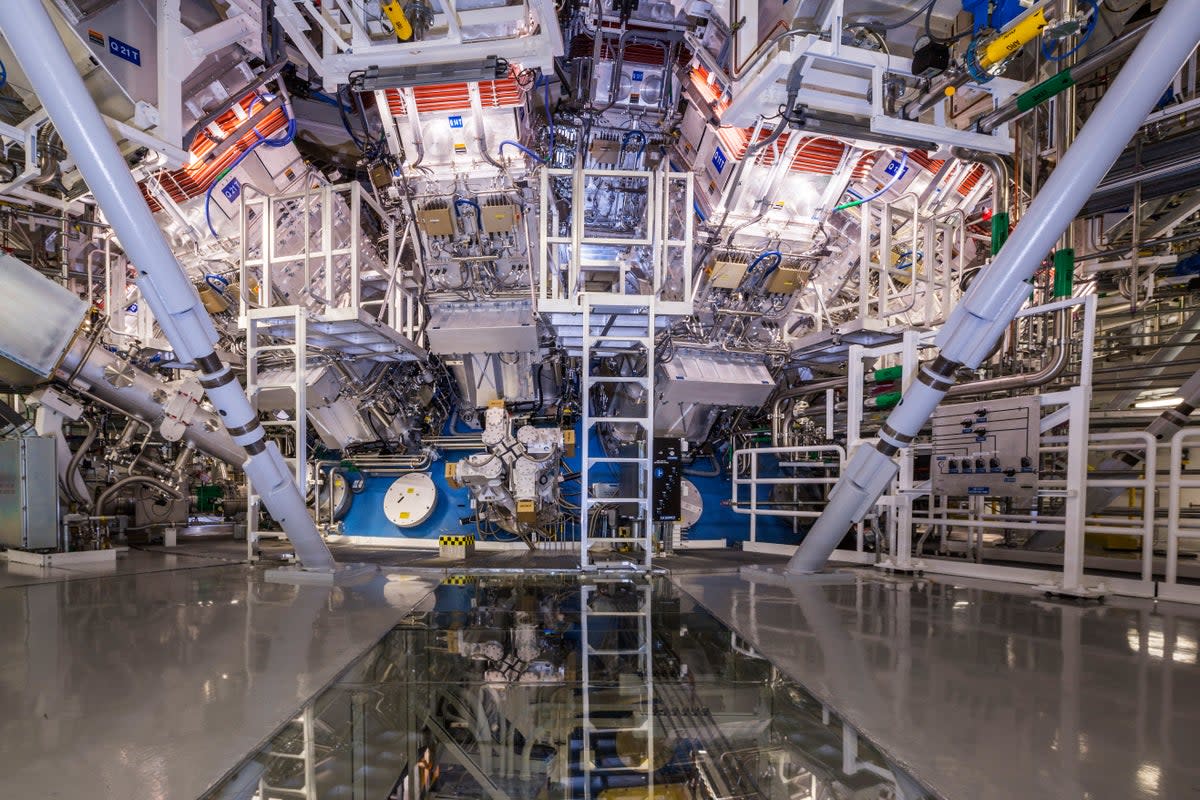US to announce ‘major’ nuclear fusion breakthrough in pursuit of near-limitless energy

The US Department of Energy is set to make an announcement on Tuesday about a “major scientific breakthrough” following media reports that a major milestone in nuclear fusion research has been achieved.
The Financial Times reported on Monday that the Lawrence Livermore National Laboratory in California achieved the significant breakthrough of achieving a net energy gain from nuclear fusion.
This would be the first time scientists have successfully produced more energy in a fusion reaction than was required to sustain it – an advance that may potentially lead to a climate-friendly, renewable energy source.
While the laboratory confirmed to FT that it had recently conducted a “successful” experiment, it did not share further details, citing the preliminary nature of the study data.
“US Secretary of Energy Jennifer M Granholm and Under Secretary for Nuclear Security and National Nuclear Security Administration (NNSA) Administrator Jill Hruby will announce a major scientific breakthrough accomplished by researchers at DOE’s Lawrence Livermore National Laboratory (LLNL),” the Department of Energy noted.
In the test, scientists bombarded a pellet of hydrogen plasma with the world’s largest laser to trigger a nuclear fusion reaction – a process similar to the one that takes place in the Sun.
Join us LIVE tomorrow at 10 a.m. ET / 7 a.m. PT for a special announcement and press conference regarding a MAJOR scientific breakthrough. Remarks will be given by @ENERGY leaders @SecGranholm, @NNSANews’ @NNSAHruby and #LLNL Director Kim Budil. Tune in: https://t.co/H2Lwto2naD pic.twitter.com/XdugB3UhEz
— Lawrence Livermore National Laboratory (@Livermore_Lab) December 12, 2022
In nuclear fusion, hydrogen atoms are forced into each other and combined into helium in a process that releases enormous amounts of heat and energy.
To achieve this, scientists reportedly used the world’s biggest laser to bombard a small quantity of hydrogen plasma that produced super heated electron-free hydrogen nuclei.
These nuclei then fuse and release energy when it leaves the bonded nuclei as they carry less mass than before.
Researchers could reportedly produce 2.5 megajoules of energy, which is 120 per cent of the 2.1 megajoules that was used to power the experiment.
The findings are not yet backed up by peer-reviewed published research.
Net energy gain has been difficult to achieve until now because the ignition for fusion happens at very high temperatures and pressures that are difficult to control.
“However, the exact yield is still being determined and we can’t confirm that it is over the threshold at this time,” the laboratory reportedly said.
An LLNL spokesperson told FT that “analysis is still ongoing”, adding that more information would be shared on Tuesday “when that process is complete”.
Proponents of nuclear power say fusion can one day lead to nearly limitless, carbon-free energy and may help displace fossil fuels.
While a net gain nuclear fusion reaction is significant, experts also explained that using the process to produce sustainable electricity for homes and cities is likely decades away.
“This is a key step on a possible pathway to commercial fusion. It demonstrates and underpins our basic understanding of the physics, and is an engineering triumph,” said Professor Sir Robin Grimes, of Imperial College London.
“Nevertheless, extracting this energy in a way that it can be harnessed, and developing the materials that can stand up to continuous operation, are massive challenges,” Dr Grimes said.

